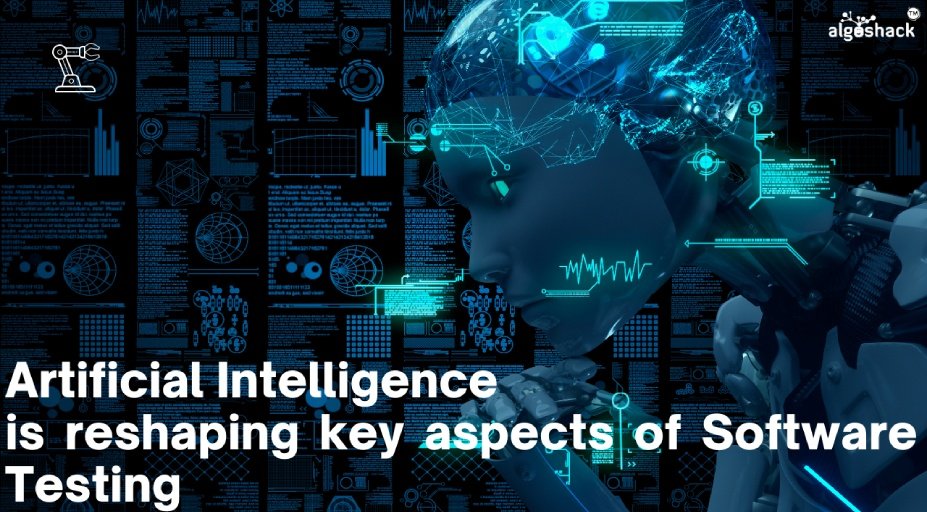To begin with, Artificial intelligence (AI) is currently the most popular buzzword, and advancements in AI enable businesses and sectors. It helps to improve judgments and fundamentally alter processes. Artificial intelligence has also emerged as the primary driving force behind this shift in software testing. This eventually increases the automated component in testing to embrace the speed of Agile to enable digital transformations. Increasing automation makes it possible to raise the overall level of client satisfaction. AI is much more versatile than that, and it does much more than only enhance software testing outcomes. With the use of artificial intelligence, you will mostly experience the following advantages:
– Using automation to remove unnecessary tasks
– Continual maintenance of constantly changing applications
– Self-healing after identifying unwanted or foreign activity
– Using clever impact analysis to reduce the testing scope
The Future Is With AI
To clarify, Software testing has undergone a fundamental transformation as a result of the widespread use of AI and ML. Future technology like the internet of things, self-driving cars, and even robotics will be observed for their good effects. To benefit from the greatest AI and shift left testing, now is the ideal moment to begin engaging with independent quality engineering partners.
Firstly, AI-based shift left testing has been incorporated by algoQA for a variety of quality engineering implementation projects. We have accelerated the delivery of high-quality engineering to market for our clients by integrating algorithmic frameworks into fundamental business procedures. Additionally, we have assisted our clients in generating and optimizing test cases efficiently, prioritizing testing and automation, improving UI testing, and shortening delivery deadlines. You may begin developing test assets more quickly and easily with greater accuracy if algoQA is your partner in quality engineering implementation.
Machine Learning could be applied in the following scenarios:
1) To aid in the selection of test cases for the regression suite and in the intelligent ordering of test cases by predicting test case failures. It’s also known as impact-based testing.
2) Test case deduplication and assistance in locating test cases that are absent.
3) To determine both positive and negative workflows that could occur. It’s best to steer clear of this argumentative subject.
4) To promote self-discovery and self-healing of surface changes
5) To decide on the fly how long UI elements should take to respond
6) To aid in performance forecasts.
What are the advantages of artificial intelligence (AI) in test automation?
-
Assembling the ideal group of people.
Using AI-based test automation technologies that provide testers with a partially or entirely script less scripting environment might help businesses get around the challenge of locating an appropriate team and skill set.
-
The length of time spent on routine tasks
No matter how reusable the parts are, teams always end up writing a lot of the same code over, which takes a lot of effort every time a new test automation project develops. Test scripts may be created quickly and automatically using AI. More importantly, to automatically develop test scripts for related projects, AI technologies can be trained using the inputs and outcomes of previous initiatives.
-
Identify the additional paths to tests
Software testing is necessary to prevent such defects and disruptions because bugs will quickly damage the user experience. When defects are discovered and fixed, experienced testers often question how they went undetected and when they entered the software. AI can effectively be used to answer the issues of how, when, and where bugs entered a system. Testers can use the data it produces to determine whether more coding changes will be needed to prevent bugs from entering the application. AI is always helping developers to identify areas to test to remove unneeded defects from programs.
-
Enhancing the test suite
One of the major problems with software development and testing is over-engineering, which wastes money, time, and effort. Large backlogs are a common problem for businesses, even those that release quickly and employ automation to advance. BOTs may also aid in reducing the backlog and allowing attention to be directed toward the proper testing. In order to eliminate duplications and strengthen traceability, BOTs can discover identical, redundant, and unique test instances.
-
Analyzing defects
The clever method of spotting flaws early and making recommendations to avoid them and shorten cycle times. The use of artificial intelligence enables teams to order regression test cases according to the threats they have detected by precisely identifying usage and failure trends to identify the most important and less evident flaws.
Some of these elements are in how AI can help in software testing
-
Automated Regression Analysis
Testing for regression requires a significant amount of the tester’s time and effort. Automated tests are carried out intelligently via regression suite automation with AI based on ongoing code modifications. By identifying and executing the right set of test cases, this test’s primary objective is to reduce the time needed to complete a regression test cycle.
-
Analysis and Prediction of Defects
Assist in the precise detection of software defects, it involves the application of machine learning and natural language processing techniques. Therefore, this test’s main objective is to ensure early issue identification and help businesses launch products more quickly.
-
Automated self-healing
The AI-enabled self-healing procedure includes the automatic repair of test automation script breaks that may result from an object or other property modifications. This test’s main objective is to make sure that less manual intervention is needed and that the self-healing process moves along more quickly.
Conclusion
At last, the time when even “Continuous Testing” will be unable to keep up with the dwindling delivery cycle times, growing technical complexity and quickening rates of change is rapidly approaching. Basic AI is already being used, but to reach the necessary efficiency, we must keep experimenting and evolving. Therefore, to ensure quality in an era where the software will be processing an inconceivable amount of data points in real-time, we need to learn how to work smarter, not harder.



